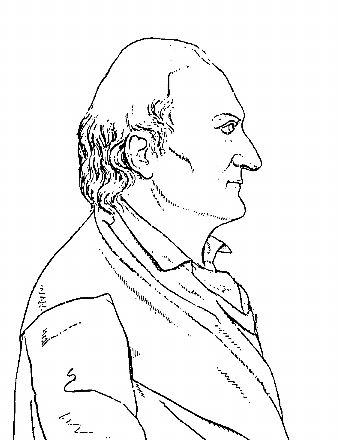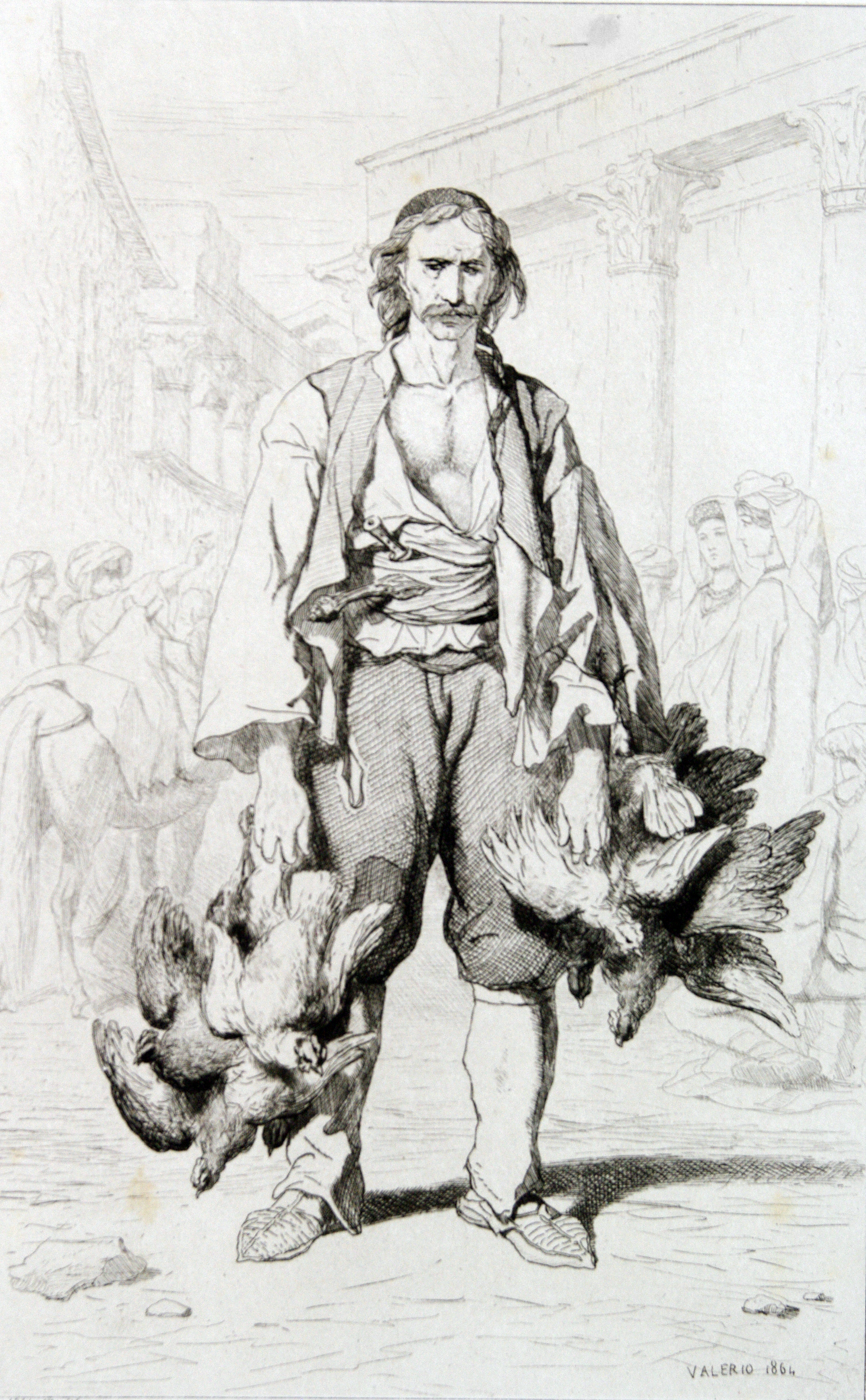|
Hasanaginica
''Hasanaginica'', also ''Asanaginica'', (first published as ''The Mourning Song of the Noble Wife of the Hasan Aga'') is a South Slavic folk ballad, created during the period of 1646–49, in the region of Imotski, which at the time was a part of the Bosnia Eyalet of the Ottoman Empire. Publication history The ballad was transmitted for years in oral form until it was written and published in 1774 by Italian traveler and ethnographer Alberto Fortis in his book ''Viaggio in Dalmazia'' ("Journey to Dalmatia") after his travel through Dalmatia in 1770. During his travels, he discovered what he called a " Morlach ballad", the Morlachs being a people from the region. Fortis's book was criticised by Croatian writer Ivan Lovrić, who accused Fortis of many factual errors in his response, ''Notes on 'Travels in Dalmatia' of Abbe Alberto Fortis'', which he then attempted to rectify. It was translated to German by Goethe in approximately 1775, first appearing anonymously as ''Klaggesang ... [...More Info...] [...Related Items...] OR: [Wikipedia] [Google] [Baidu] |
Alberto Fortis
Alberto Fortis (1741–1803) was a Republic of Venice, Venetian writer, naturalist and cartographer. Life His real name was Giovanni Battista Fortis (his religious name was ''Alberto'') and he was born in Padua on either 9 or 11 of November 1741. He journeyed extensively in Venetian Dalmatia. His best known work is ''Viaggio in Dalmazia'' ("Journey to Dalmatia"), originally published in 1774 and first published in London in 1778. The highlight of the book is the description of Morlachia, a historical region currently located in Croatia named after the Morlachs that inhabited the region. In his book, Fortis presented his literary discovery "Hasanaginica" as a Morlach (Vlach) ballad. Larry Wolf believed Fortis wrote the ballad as a poetry of South Slavs rather than a poetry of the Morlachs. Fortis believed that the Morlachs preserved their old customs and clothes. Their ethnographic traits were traditional clothings, use of the gusle musical instrument accompanied with epic singing ... [...More Info...] [...Related Items...] OR: [Wikipedia] [Google] [Baidu] |
Imotski
Imotski (; it, Imoschi; lat, Emotha, later ''Imota'') is a small town on the northern side of the Biokovo massif in the Dalmatian Hinterland of southern Croatia, near the border with Bosnia and Herzegovina. Imotski, like the surrounding inland Dalmatia, has a generally mild Mediterranean climate which makes it a popular tourist destination. Geography The town is located close to the border with Bosnia and Herzegovina, 10 km away from Posušje and 18 km from Grude. It is located 29 km away from the coast (Baška Voda). The nearest coastal town is Makarska, on the other side of the Biokovo massif. The town is located on the crossroad of D60 and D76 state roads and 20 km from the Sveti Ilija Tunnel. The A1 motorway is accessed at the Zagvozd Interchange, next to the D76 expressway. Imotski is known for its medieval fortress on the rocks of Blue Lake. Another phenomenon is the Red Lake which looks like an eye in the scenery. Both lakes are said to be connec ... [...More Info...] [...Related Items...] OR: [Wikipedia] [Google] [Baidu] |
Morlachs
Morlachs ( sh-Latn-Cyrl, Morlaci, Морлаци or , ; it, Morlacchi; ro, Morlaci) has been an exonym used for a rural Christian community in Herzegovina, Lika and the Dalmatian Hinterland. The term was initially used for a bilingual Vlach pastoralist community in the mountains of Croatia in the second half of the 14th until the early 16th century. Then, when the community straddled the Venetian– Ottoman border until in the 17th century, it only referred to Slavic-speaking, mainly Eastern Orthodox but also Roman Catholic people. The Vlach i.e. Morlach population of Herzegovina and Dalmatian hinterland from the Venetian and Turkish side were of either Roman Catholic or Christian Orthodox faith. Venetian sources from 17th and 18th century make no distinction between Orthodox and Catholics, they refer to both groupings as Morlachs. The exonym ceased to be used in an ethnic sense by the end of the 18th century, and came to be viewed as derogatory, but has been renewed as a soc ... [...More Info...] [...Related Items...] OR: [Wikipedia] [Google] [Baidu] |
William Gibson
William Ford Gibson (born March 17, 1948) is an American-Canadian speculative fiction writer and essayist widely credited with pioneering the science fiction subgenre known as ''cyberpunk''. Beginning his writing career in the late 1970s, his early works were noir, near-future stories that explored the effects of technology, cybernetics, and computer networks on humans—a "combination of lowlife and high tech"—and helped to create an iconography for the information age before the ubiquity of the Internet in the 1990s. Gibson coined the term " cyberspace" for "widespread, interconnected digital technology" in his short story "Burning Chrome" (1982), and later popularized the concept in his acclaimed debut novel ''Neuromancer'' (1984). These early works of Gibson's have been credited with "renovating" science fiction literature in the 1980s. After expanding on the story in ''Neuromancer'' with two more novels (''Count Zero'' in 1986, and ''Mona Lisa Overdrive'' in 1988), th ... [...More Info...] [...Related Items...] OR: [Wikipedia] [Google] [Baidu] |
Alexander Pushkin
Alexander Sergeyevich Pushkin (; rus, links=no, Александр Сергеевич ПушкинIn pre-Revolutionary script, his name was written ., r=Aleksandr Sergeyevich Pushkin, p=ɐlʲɪkˈsandr sʲɪrˈɡʲe(j)ɪvʲɪtɕ ˈpuʂkʲɪn, a=ru-Pushkin.ogg; ) was a Russian poet, playwright, and novelist of the Romantic era.Basker, Michael. Pushkin and Romanticism. In Ferber, Michael, ed., ''A Companion to European Romanticism''. Oxford: Blackwell, 2005. He is considered by many to be the greatest Russian poetShort biography from University of Virginia . Retrieved 24 November 2006.Allan Rei ... [...More Info...] [...Related Items...] OR: [Wikipedia] [Google] [Baidu] |
Anna Akhmatova
Anna Andreyevna Gorenko rus, А́нна Андре́евна Горе́нко, p=ˈanːə ɐnˈdrʲe(j)ɪvnə ɡɐˈrʲɛnkə, a=Anna Andreyevna Gorenko.ru.oga, links=yes; uk, А́нна Андрі́ївна Горе́нко, Ánna Andríyivna Horénko, . ( – 5 March 1966), better known by the pen name Anna Akhmatova,. was one of the most significant Russian poets of 20th century. She was shortlisted for the Nobel Prize in 1965 and received second-most (three) nominations for the award the following year. Akhmatova's work ranges from short lyric poems to intricately structured cycles, such as ''Requiem'' (1935–40), her tragic masterpiece about the Stalinist terror. Her style, characterised by its economy and emotional restraint, was strikingly original and distinctive to her contemporaries. The strong and clear leading female voice struck a new chord in Russian poetry.Harrington (2006) p. 11 Her writing can be said to fall into two periods – the early work (1912–25) ... [...More Info...] [...Related Items...] OR: [Wikipedia] [Google] [Baidu] |
Prosper Mérimée
Prosper Mérimée (; 28 September 1803 – 23 September 1870) was a French writer in the movement of Romanticism, and one of the pioneers of the novella, a short novel or long short story. He was also a noted archaeologist and historian, and an important figure in the history of architectural preservation. He is best known for his novella ''Carmen'', which became the basis of Bizet's opera ''Carmen''. He learned Russian, a language for which he had great affection, and translated the work of several important Russian writers, including Pushkin and Gogol, into French. From 1830 until 1860 he was the inspector of French historical monuments, and was responsible for the protection of many historic sites, including the medieval citadel of Carcassonne and the restoration of the façade of the cathedral of Notre-Dame de Paris. Along with the writer George Sand, he discovered the series of tapestries called ''The Lady and the Unicorn'', and arranged for their preservation. He was instr ... [...More Info...] [...Related Items...] OR: [Wikipedia] [Google] [Baidu] |
Adam Mickiewicz
Adam Bernard Mickiewicz (; 24 December 179826 November 1855) was a Polish poet, dramatist, essayist, publicist, translator and political activist. He is regarded as national poet in Poland, Lithuania and Belarus. A principal figure in Polish Romanticism, he is one of Poland's "Three Bards" ( pl, Trzej Wieszcze) and is widely regarded as Poland's greatest poet. He is also considered one of the greatest Slavic and European poets and has been dubbed a "Slavic bard". A leading Romantic dramatist, he has been compared in Poland and Europe to Byron and Goethe. He is known chiefly for the poetic drama ''Dziady'' (''Forefathers' Eve'') and the national epic poem '' Pan Tadeusz''. His other influential works include '' Konrad Wallenrod'' and '' Grażyna''. All these served as inspiration for uprisings against the three imperial powers that had partitioned the Polish–Lithuanian Commonwealth out of existence. Mickiewicz was born in the Russian-partitioned territories of the former G ... [...More Info...] [...Related Items...] OR: [Wikipedia] [Google] [Baidu] |
Owen Meredith
Edward Robert Lytton Bulwer-Lytton, 1st Earl of Lytton, (8 November 183124 November 1891) was an English statesman, Conservative politician and poet who used the pseudonym Owen Meredith. He served as Viceroy of India between 1876 and 1880during his tenure, Queen Victoria was proclaimed Empress of Indiaand as British Ambassador to France from 1887 to 1891. His tenure as Viceroy was controversial for its ruthlessness in both domestic and foreign affairs, especially for his handling of the Great Famine of 1876–78 and the Second Anglo-Afghan War. His policies were alleged to be informed by his Social Darwinism. His son Victor Bulwer-Lytton, 2nd Earl of Lytton, who was born in India, later served as Governor of Bengal and briefly as acting Viceroy. The senior earl was also the father-in-law of the architect Sir Edwin Lutyens, who designed New Delhi. Lytton was a protégé of Benjamin Disraeli in domestic affairs, and of Richard Lyons, 1st Viscount Lyons, who was his predecesso ... [...More Info...] [...Related Items...] OR: [Wikipedia] [Google] [Baidu] |
Zagvozd
Zagvozd is a village and a seat of Zagvozd municipality in the Split-Dalmatia County, Croatia. In 2011 it had a population of 767. Municipality Zagvozd is a seat of the Municipalities of Croatia, municipality of the same name. It includes the villages of: Biokovsko Selo, Krstatice, Rastovac, Split-Dalmatia County, Rastovac, Rašćane Gornje, Župa, Split-Dalmatia County, Župa, Župa Srednja and Zagvozd. In 2011, the municipality had a population of 1,642 (2001 census), 99% of which are ethnic Croats. History From 1941 to 1945, Zagvozd was part of the Independent State of Croatia. In the settlements of Zagvozd and Rastovac, Split-Dalmatia County, Rastovac, at least 190 lost their lives over the course of the war. Zagvozd was the site of a 1945 torture and massacre of 18 friars and civilians, committed by Yugoslav Partisans. Their remains were discovered in 2005. DNA analysis in Split (city), Split revealed the identities of three of the victims as Franciscan friars from the t ... [...More Info...] [...Related Items...] OR: [Wikipedia] [Google] [Baidu] |






